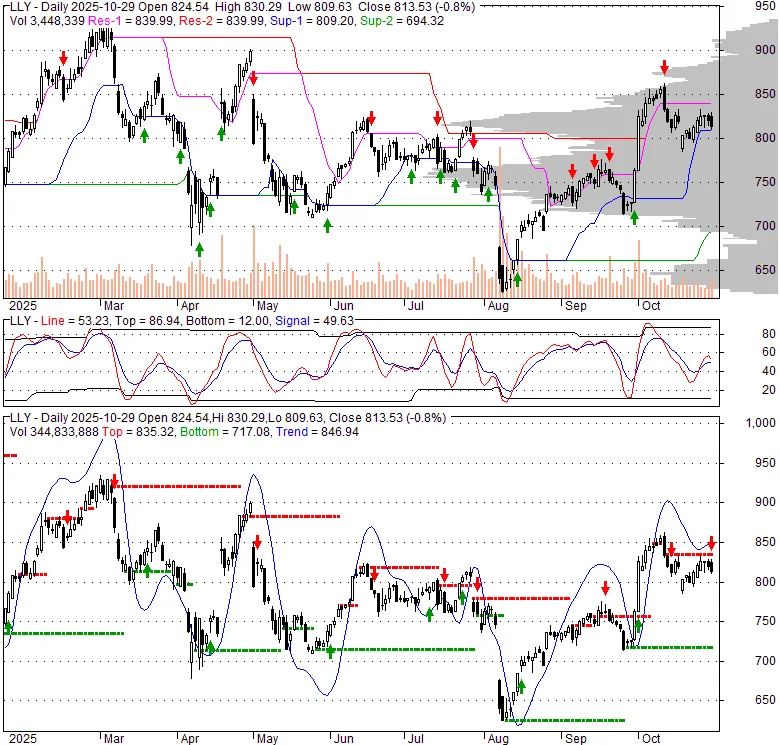Article Directory
Eli Lilly's Earnings Weren't Just a Beat—They Were a Glimpse of a New Era in Medicine
There's a specific kind of quiet hum that precedes a major corporate earnings call, an electric tension you can almost feel in the digital air. It’s the collective, silent focus of thousands of traders, analysts, and investors, all staring at their screens, waiting for a single data point to validate or shatter their expectations. In the days leading up to October 30th, that hum around Eli Lilly was practically a roar. The question on everyone’s lips was simple: after a year where the stock’s sizzle had seemingly fizzled, could the pharma giant deliver?
Wall Street had set the bar ridiculously high. The consensus was a staggering 40% year-over-year revenue jump to around $16 billion. But the market has a funny way of being… well, irrational. As one pre-earnings analysis pointed out, Lilly’s stock had a bizarre history of shrugging off good news and rallying on bad. It beat estimates in Q2? The stock dipped. It missed in Q1? The stock rose. It was a chaotic, unpredictable dance that had everyone guessing. Trying to predict the stock’s next move felt less like financial analysis and more like reading tea leaves.
And then, the numbers dropped.
The headlines said it all: Eli Lilly blows past estimates, hikes guidance as Zepbound and Mounjaro sales soar. It wasn't just a beat; it was a demolition. When I saw the news, I honestly just sat back in my chair, speechless. This wasn't just a good quarter for a drug company; this was a validation point for an entire field of science, a signal flare announcing that something fundamental has changed. To get caught up in the stock’s one-day pop is to miss the forest for a single, albeit very green, tree. What we are witnessing is not a financial event, but a profound technological one.
The Dawn of Biological Precision
For decades, much of pharmaceutical development has felt like carpentry with a sledgehammer. We knew the general area of the problem, and we threw broadly effective—but often imprecise—solutions at it. The results were life-changing, of course, but they came with trade-offs, side effects, and a sense of brute force. What Lilly’s results represent, driven by the astronomical success of Mounjaro and Zepbound, is the dawn of a new philosophy.

These drugs are GLP-1 and GIP receptor agonists—in simpler terms, they are molecules engineered to precisely mimic the natural hormones our bodies use to regulate appetite and blood sugar. They don't just carpet-bomb a system; they send a specific, targeted message. This is the difference between shouting in a crowded room and whispering a secret directly into someone's ear. This is biological precision. Mounjaro and Zepbound, which now account for over half of the company’s revenue, aren't just weight-loss drugs; they are the proof-of-concept for a new class of tools for interacting with human biology.
This is the kind of breakthrough that reminds me why I got into this field in the first place—it’s not just an incremental improvement but a fundamental shift in how we approach wellness, moving from a reactive model of 'fixing what's broken' to a proactive one of 'optimizing what's possible'. We are at an inflection point, much like the moment when penicillin was discovered and our entire relationship with bacterial infection was rewritten overnight. Before antibiotics, a simple cut could be a death sentence. After, it was a minor inconvenience. What happens to society when chronic metabolic diseases, which have plagued humanity for a century, start to move into that second category?
A New Responsibility for a New Age
This leap forward isn't just about the science; it's about what we do with it. When you develop a tool this powerful, you inherit an immense responsibility. The ability to fine-tune human metabolism on a massive scale raises questions we are only just beginning to formulate. How do we ensure equitable access? What does this mean for our food industries, our healthcare systems, our very culture around body image and health? These aren't criticisms; they are the necessary, vital conversations that must accompany any true paradigm shift.
We are moving beyond simply treating the symptoms of metabolic dysfunction and are now addressing the underlying signaling pathways. Imagine extending this principle. What other biological conversations can we join? Can we send precise messages to the immune system to halt autoimmune diseases before they start? Can we whisper to our neural pathways to stave off cognitive decline?
The blowout earnings and hiked guidance from Eli Lilly aren't the story. They are the footnote. They are the economic echo of a much deeper truth: we have opened a new door in biotechnology. We’ve learned a new language, the language of our own internal signaling, and we are just starting to speak our first words. The future won't be about just curing disease; it will be about cultivating a state of sustained, optimized health. What does a society with a radically different relationship to chronic illness even look like? What new human potential is unlocked when we are freed from these biological burdens?
The First Tremor of a Revolution
Look, the market will do what it does. Stocks will go up, they will go down. But to see Eli Lilly’s latest report as just a number on a screen is a failure of imagination. This isn’t about a quarterly report. It’s about the tangible, world-altering result of decades of brilliant, painstaking research. We are witnessing the commercial validation of a scientific revolution, the moment a breakthrough moves from the lab to the real world on a scale that will redefine the health and lives of millions. The numbers are just the first, loud tremor announcing the earthquake of change that is to come.
